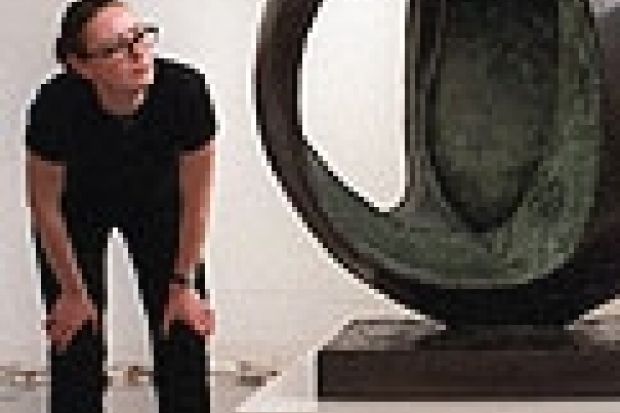University museums are a treasure trove of learning and it is time to unlock their potential. Caroline Davis reports.
The main thing I remember from my undergraduate maths lectures is a 16ft iguanodon. This was not an innovative teaching scheme to practise Lebesgue integration on the spinal curve of a dinosaur, but because the only lecture room large enough to hold all the first-years was a stuffy windowless one in the back of the university museum.
Universities are closely linked with museums - many have their own and 16 universities hold collections designated of national importance. Thousands of schoolchildren flood into museums every year, but visits from students are far less common.
The bulk market provided by the national curriculum has meant that many museums have concentrated their education programmes on schools. In contrast, universities and colleges have a smaller number of people studying a wider range of courses. It is up to individual lecturers to make their own use of their local, national and university museums. With courses becoming more desk-based and reliant on literature, even some archaeology students do not visit museums.
A conference last month in the British Museum's new Clore Education Centre examined the impact of museums, what kinds of audiences they can bring in, digital advances and the future for education in museums and galleries. Little mention was made of higher education.
Organiser John Reeve, head of education at the British Museum, says:
"Higher education has yet to be convinced of the learning power of museums."
Reeve wants this to change. The British Museum is putting higher education near the top of its agenda over the next five years. It is asking lecturers to discuss how object-based learning can be developed in a wider range of courses. For example, Reeve believes university history departments could benefit from the loan collections, using objects that the museum cannot show to bring the subject alive.
The museum offers student research facilities in study rooms as well as the Hamlyn Library, reading rooms, online pictorial database (Compass) and lecture theatres. It is launching a series of postgraduate courses, for example a diploma in Asian art, accredited by Royal Holloway, University of London, and taught by museum curators and visiting lecturers from a wide range of museums and institutions. The museum will also run courses next year to help lecturers make best use of the facilities. Even so, Reeve thinks students need encouragement from their tutors, for example, by gaining course credits for private study in museums.
Nick Merriman, reader in museum studies and curator of the University College London Institute of Archaeology, says: "Many museums have not recognised that tertiary education has expanded massively." UCL museums are finding out what is taught in the university and tailoring their services to fit. Many course tutors are ignorant about what is on offer, he says.
Merriman hopes to renew interest by focusing his masters students in museum studies on the needs of higher education. His course uses the UCL and other London museums as teaching resources. Students are able to use objects in exhibition projects as well as learn to handle them. Fiona Candlin, who holds a joint lectureship between Birkbeck College, University of London and the British Museum in museum studies and lifelong education, says there is a lack of research at higher education level. However, she sees museums as a crucial teaching resource.
"It puts a different focus on students' work, looking at the objects and trying to understand who made them, why they were made, what rituals they were part of and the historical context," she explains. "It enables them to build out from the specific. It's easy to overlook material objects in study. The diversity of the collections is an incredible resource."
Last year's white paper The Learning Power of Museums positioned education as a central focus for museums. A set of assessment standards being drawn up by Resource (formerly the Council for Museums, Archives and Libraries) will set performance indicators, one of which will be links with universities.
"The pressure is on museums to become accountable," Candlin says. "Education departments must demonstrate working with partners such as schools and higher education, offering programmes that key into accredited programmes and awards."
Many museums run modules for teacher training courses, and Resource recently called on the government to recognise the time trainee teachers spend in museums towards "school" time.
Manchester Museum, part of Manchester University, sends 2,500 of its artefacts to researchers around the world. The curators, who are employed on academic contracts, lecture locally and at universities around the country.
The Science Museum in London is planning to extend its resource packs for teachers to higher education level, giving guidance on how the museum can best be used. In its new Wellcome Wing, a live science area invites research groups to come and work. This has proved mutually beneficial - one team researching the genetic basis for facial characteristics was able to take 3D face scans together with DNA swabs from visitors, who in return learnt about how scientists work.
Reeve believes museums need to start consulting universities, comparing notes and considering models for partnership. "Museums want to rethink the way subjects are taught. We have a vested interest - where are the object-based curators of the future going to come from?"
